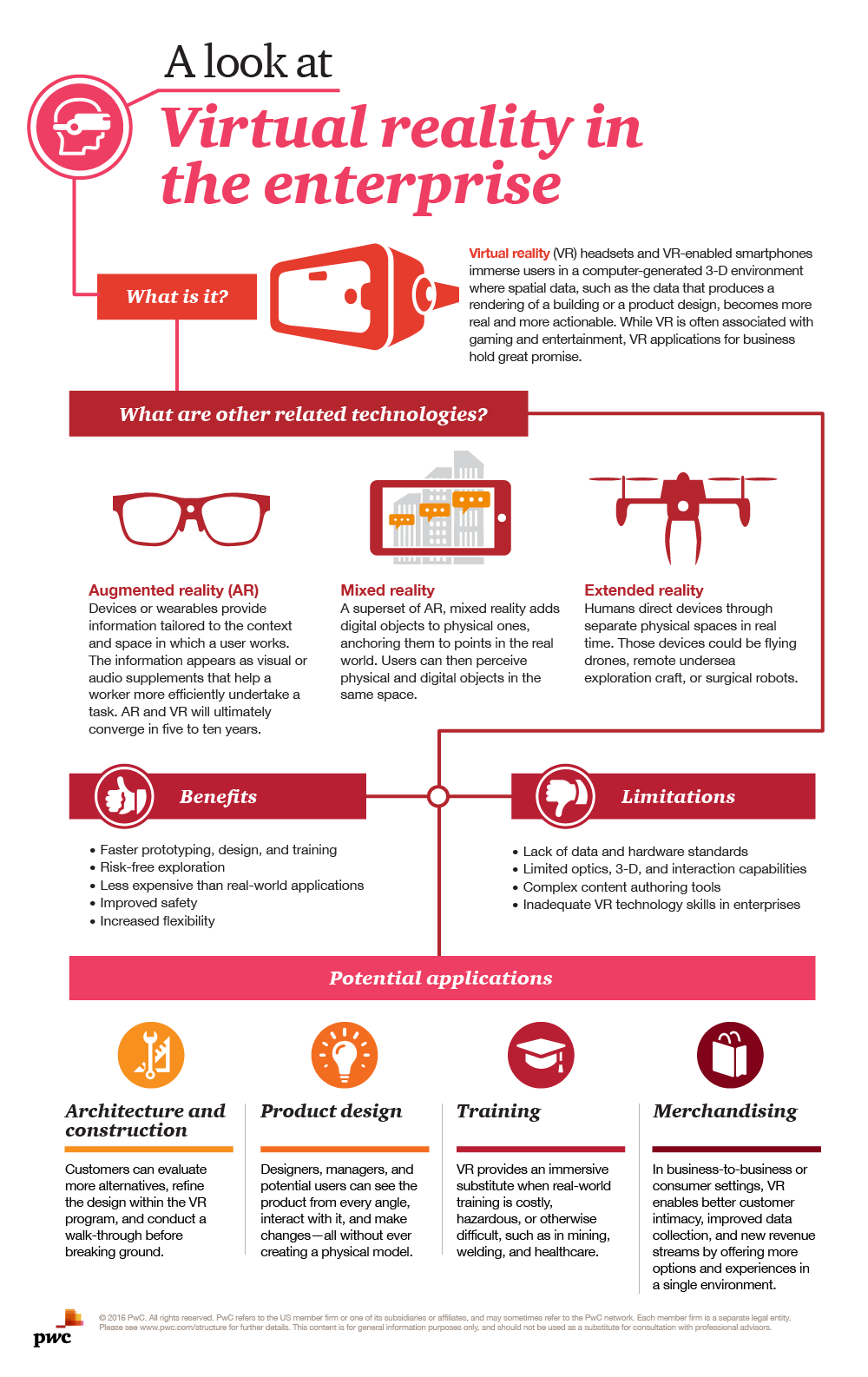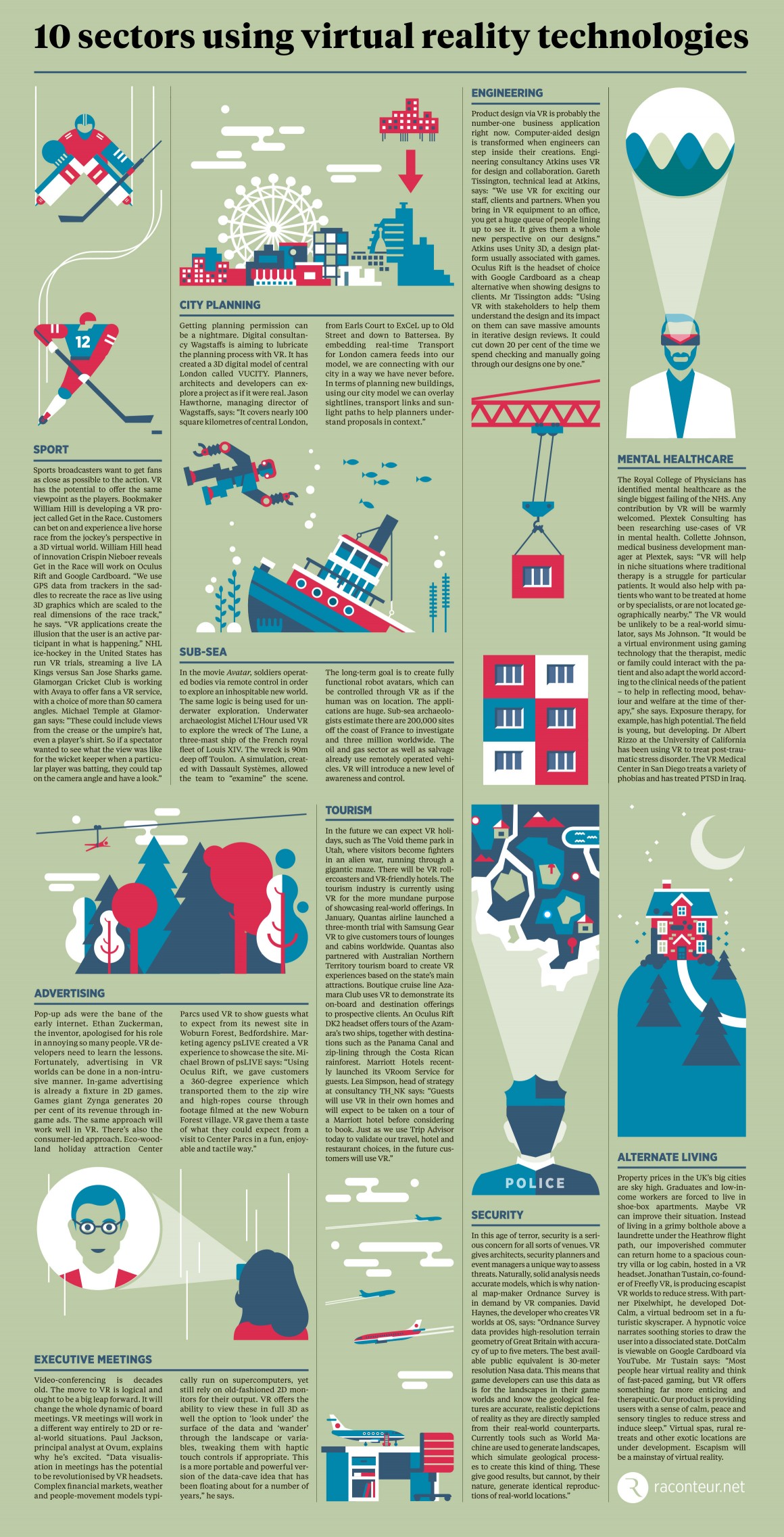Tag: architecture
-

Infographic – VR in the Enterprise
Virtual Reality is a technology that immerses its users in a computer-generated 3D environment. Today, there are many other devices and technologies available that offer similar user experiences. Augmented Reality, for one, uses a wearable device to provide contextual information based on the user’s space at that moment. Mixed Reality overlays digital items to objects…
-

Infographic: How We Use AR
Both Virtual Reality and Augmented Reality are growing in popularity across a variety of industries. The reputation of both is that they are primarily used for gaming and entertainment; however AR is actually being used to assist doctors, engineers, teachers, and more in their professions. By introducing AR into the classroom, students will have a new way to learn by…
-

Infographic – The History and Future of Augmented Reality
Unlike Virtual Reality, Augmented Reality does not immerse its user into a new environment; it enhances one’s reality by overlaying digital information onto things being viewed on a digital device. Though AR is rising in popularity in 2016, variations of it have been around since 1957 with Mortin Helig’s Sensorama machine as one such example.…
-

Infographic – What You May Not Have Known About Augmented Reality
Augmented Reality (AR) is easily accessible for anyone who owns a computer with a webcam, camera phone, or game console with a camera. Currently, AR is making strides in industries including architecture, marketing, healthcare, military, retail, and tourism. AR enhances the shopping experience by assisting customers finding items in the store, displaying product reviews, and…
-

Infographic: Sectors Using Virtual Reality
When people think of Virtual Reality, they often think of VR primarily as a platform for gaming. However VR can actually serve a myriad of purposes and is currently being utilized by several industries. City planning and architecture, are one such example. VR simplifies the act of envisioning what a new building would look like…



